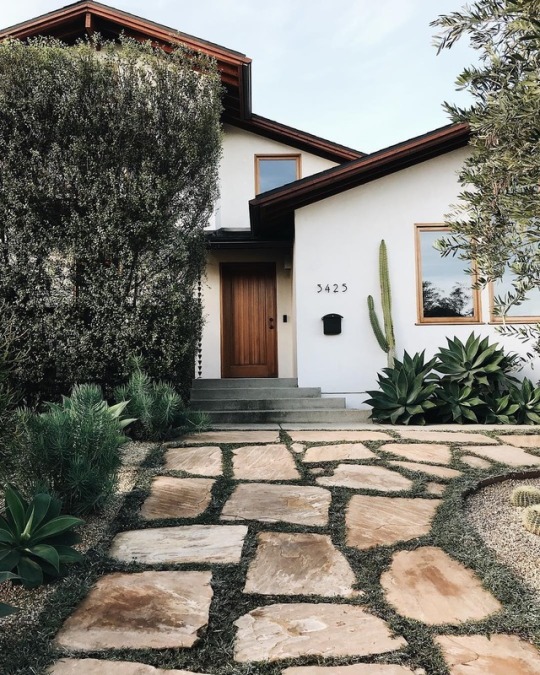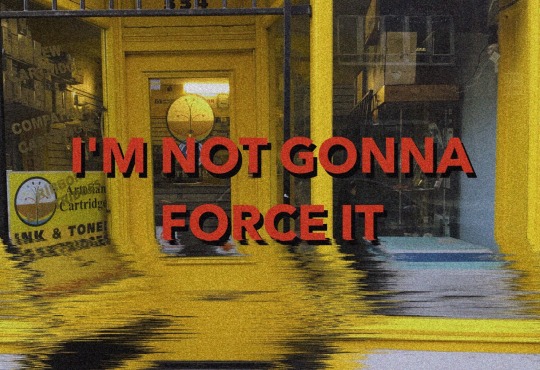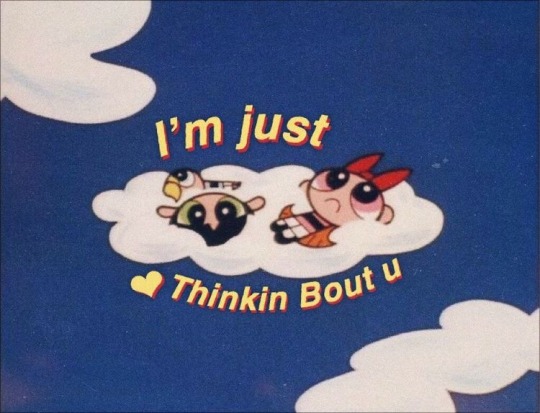Text

https://www.instagram.com/p/B0xQlVTAE1K/
178 notes
·
View notes
Photo

Paulos, tr. by Andrew Miller, from “Greek Anthology; Epigrams,” publ. c. 1918
9K notes
·
View notes
Photo
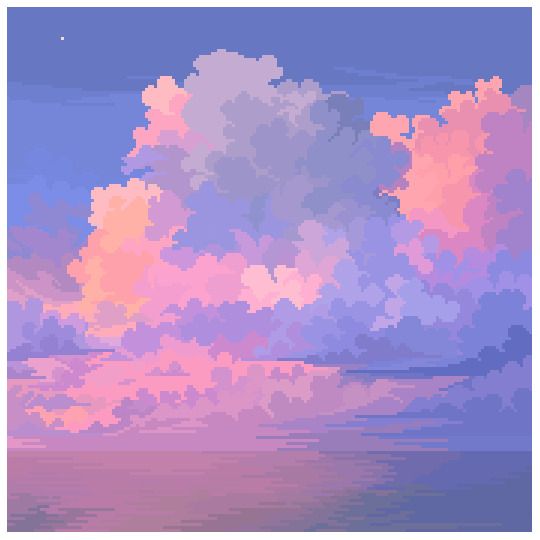

summertime vibes
follow my twitter / patreon / shop / buy me a coffee
8K notes
·
View notes
Photo

Fith Ave in Gold - Patrick Pietropoli , 2010.
French,b.1953-
Oil , gold foil , flax on canvas, 160 x 137 cm.
527 notes
·
View notes
Photo
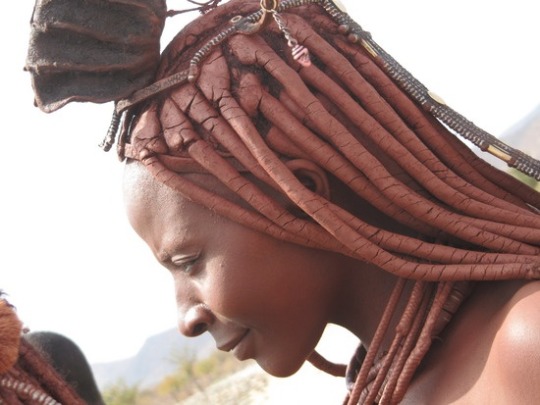
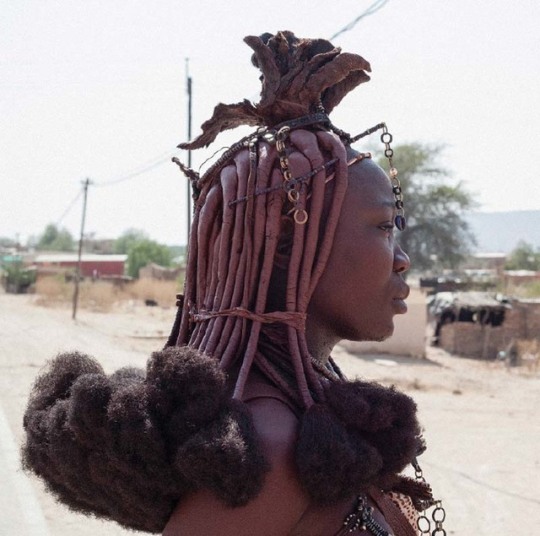


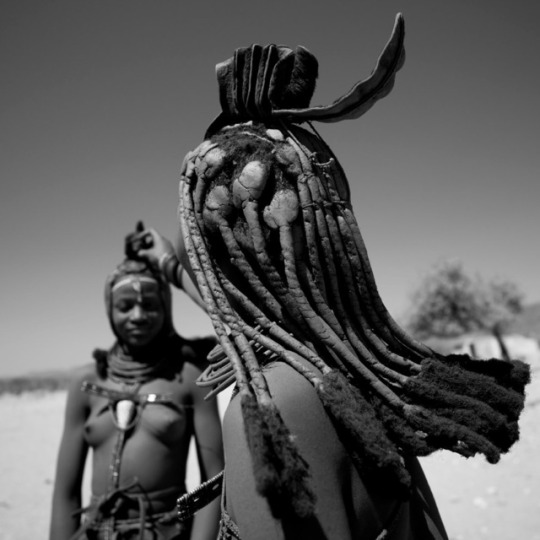
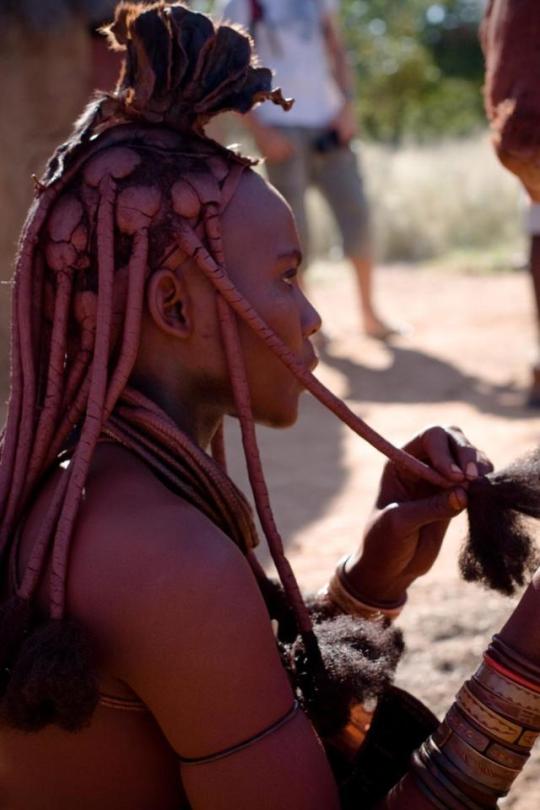

The Himba (singular: OmuHimba, plural: OvaHimba) are indigenous peoples with an estimated population of about 50,000 people living in northern Namibia, in the Kunene Region (formerly Kaokoland) and on the other side of the Kunene River in Angola. The OvaHimba are a semi-nomadic, pastoralist people, culturally distinguishable from the Herero people in northern Namibia and southern Angola, and speak OtjiHimba, a variety of Herero, which belongs to the Bantu family within Niger–Congo. The OvaHimba are considered the last (semi-) nomadic people of Namibia.
The Himba often cover themselves with otjize paste, a cosmetic mixture of butterfat and ochre pigment, to cleanse the skin over long periods due to water scarcity and protect themselves from the extremely hot and dry climate of the Kaokoland as well as against mosquito insect bites. The cosmetic mixture, often perfumed with the aromatic resin of the omuzumba shrub, gives their skin and hair plaits a distinctive orange or red-tinge characteristic, as well as texture and style. Otjize is considered foremost a highly desirable aesthetic beauty cosmetic, symbolizing earth’s rich red color and blood the essence of life, and is consistent with the OvaHimba ideal of beauty. The OvaHimba are also accustomed to use wood ash for hair cleansing due to water scarcity.
Hairstyle and jewelry play a significant role among the OvaHimba, it indicates age and social status within their community. An infant or child will generally have his head kept shaven of hair or a small crop of hair on his head crown. This soon is sculptured to one braided hair plait extended to the rear of the head for young boys and young girls have two braided hair plaits extended forward towards the face often parallel to their eyes. This style is called ozondato, the form of wear being determined by the oruzo membership (patrilineal descent group). The style remains during preadolescence until reaching puberty. Some young girls, with exception, may also have one braided hair plait extended forwards, which means they are one of a pair of twins.
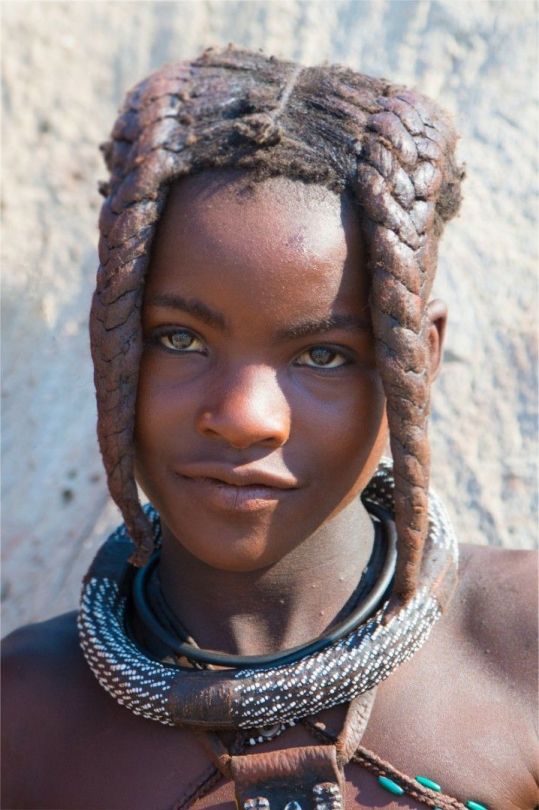
OvaHimba girl
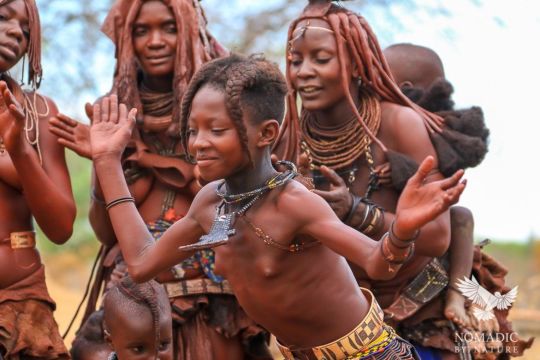
OvaHimba girl dancing
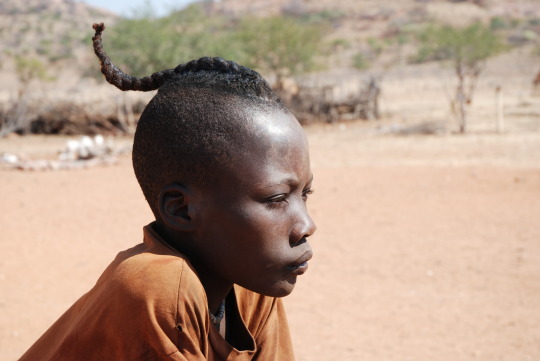
OvaHimba boy
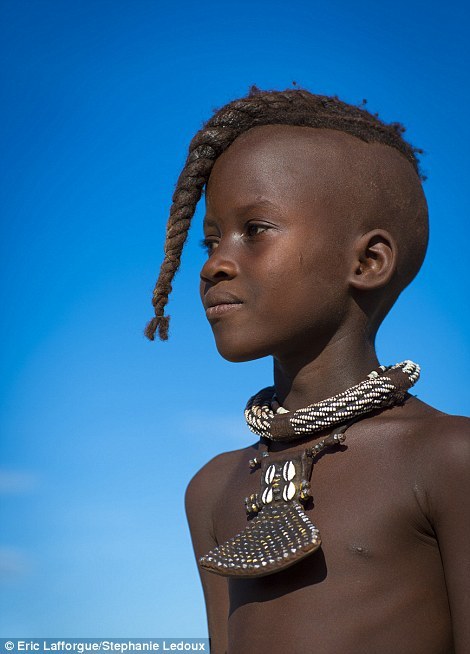
OvaHimba girl, one of a set of twins!

OvaHimba children, both boys and girls, removing ticks from goats.
From pubescence, boys continue to have one braided hair plait.
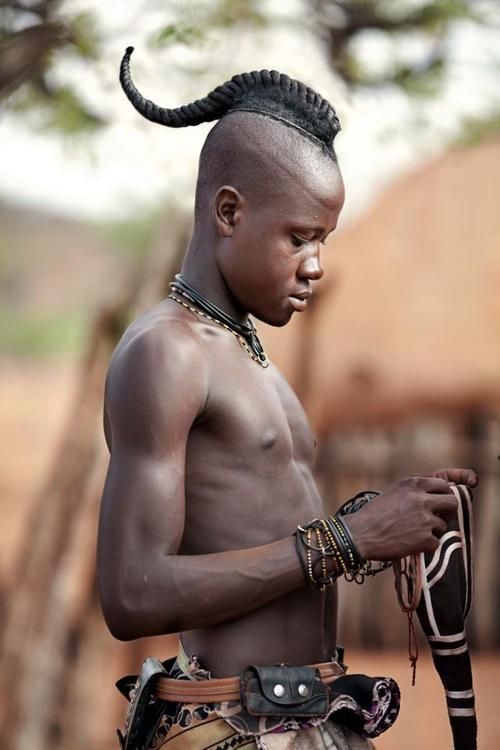
A young man wearing a braid known as ondatu. Namibia. Photo by Nigel Pavitt
Once they reach puberty, OvaHimba girls will have many otjize textured hair plaits, some arranged to veil the girl’s face.
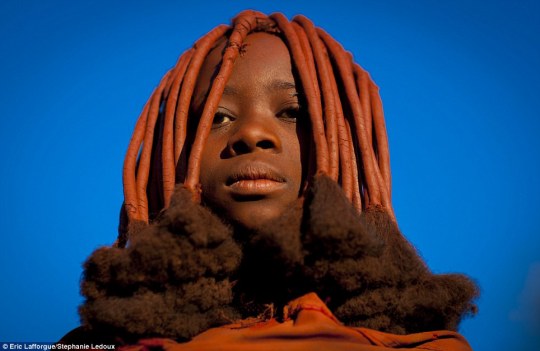
This girl is going through puberty, a fact made plain by her hairstyle, which has been designed to cover her face and help her avoid male attention. The puffs at the bottom are either goat hair or synthetic.
(In daily practice, the hair plaits are often tied together and held parted back from the face.)

This girl’s braids are arranged to reveal her face, indicating that she’s ready to be married.
Women who have been married for about a year, or have had a child, wear an ornate headpiece called the Erembe, sculptured from sheepskin, with many streams of braided hair, coloured and put in shape with otjize paste.
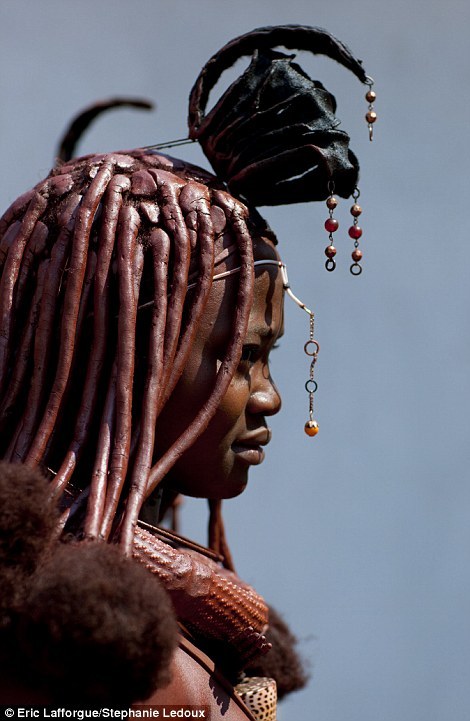

Married women wearing erembe
Unmarried young men continue to wear one braided hair plait extended to the rear of the head. When Himba men marry, they start wearing turbans, which they never take off unless someone in the village dies. After a death, their heads are shaved. Because the turbans are never removed, things can get a little itchy underneath, so men carry pointed arrow-like instruments to scratch it with.

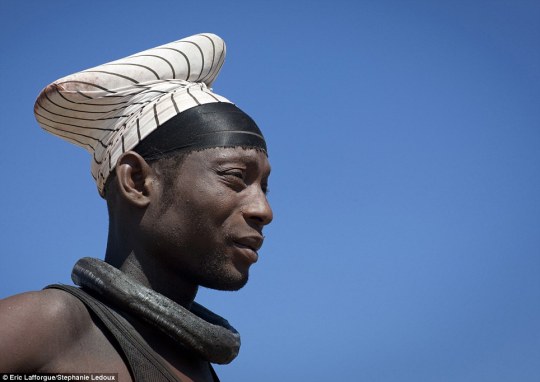

Married OvaHimba men. #s 1 and 3 wear a scratching implement in their turbans.
Widowed men will remove their cap or head-wrap and expose un-braided hair.

Himba widower. The habit of using a head-scratching implement is hard to break.
[Source]
100K notes
·
View notes
Photo

https://www.instagram.com/p/BzMdTcGJRVQ/
379 notes
·
View notes




